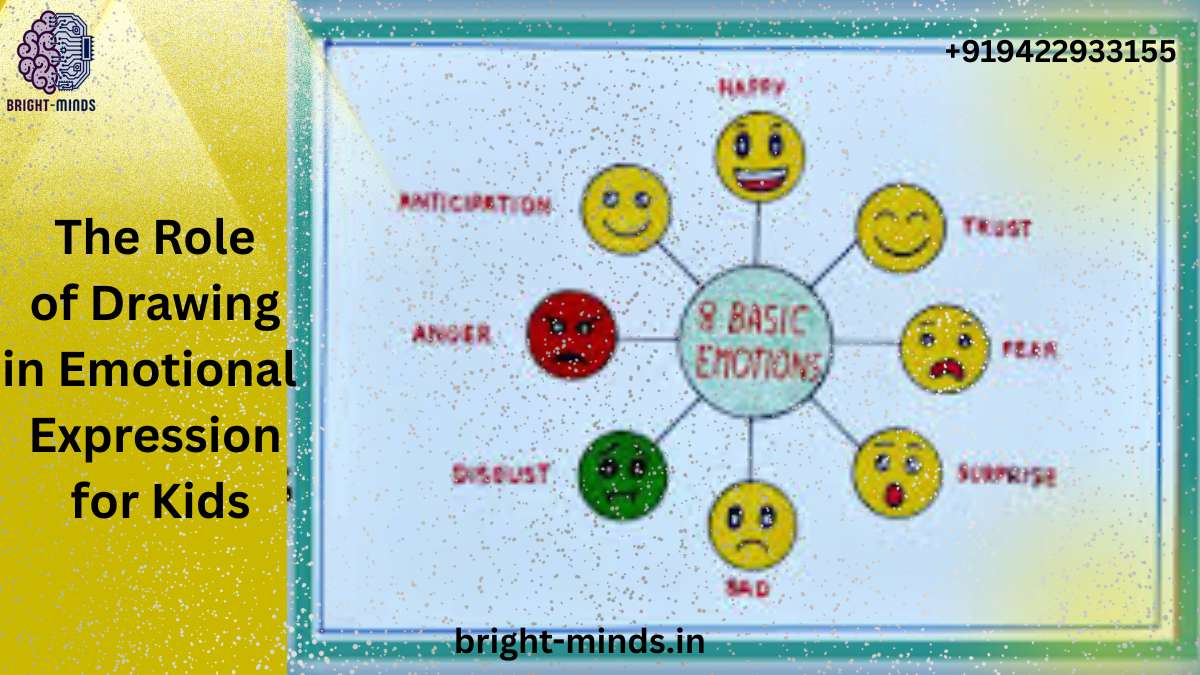- Have you ever noticed a child silently drawing a picture after a tough day? Maybe they sketch a stormy sky, a big smile, or a family holding hands. That’s not just art—it’s emotion in motion.
For children, especially those still developing verbal skills, drawing becomes a powerful outlet. It helps them process feelings, manage stress, and communicate when words fall short. And in today’s fast-paced world, where both kids and adults are juggling mental health, routines, and responsibilities, creative expression has never been more important.
In this post, we’ll explore the role of drawing in emotional expression for kids, how it applies in homes, classrooms, and even workplace wellness programs, and how you can use it to nurture emotional intelligence from an early age.
🎨 Why Drawing Matters for Emotional Development
Children experience a wide range of emotions daily—joy, fear, anger, excitement—but they often struggle to express them clearly. Drawing provides a safe, non-verbal language to communicate what they feel inside.
According to child psychologists, drawing:
- Reduces anxiety and stress
- Helps children identify and understand their emotions
- Improves self-awareness and confidence
- Strengthens emotional regulation
🧠 Expert Insight: A study by the American Art Therapy Association found that children who regularly engage in drawing are more likely to develop resilience and emotional clarity than those who don’t.
It’s not just scribbles and rainbows—it’s early mental wellness at work.
💼 How This Applies to Parents, Teachers & Professionals
Drawing is more than just a classroom activity—it’s a life skill builder. And with mental health and emotional literacy becoming priorities in both education and corporate spaces, the power of creative expression is gaining serious traction.
For Parents:
Use drawing as a conversation starter. If your child seems upset, ask them to draw what they’re feeling. Then talk about it.
For Educators:
Incorporate drawing into SEL (Social Emotional Learning) curriculums. Let kids illustrate stories, feelings, or even classroom rules.
For Company Employees:
If your company offers family programs or wellness initiatives, art-based emotional expression can be a unique and effective tool. It supports not just child development, but also reduces stress for working parents managing both deadlines and homework.
📊 Industry Trend: As of 2024, over 68% of companies with family-focused benefits are introducing creative wellness programs, including digital art tools and family drawing workshops.
✍️ Real-World Examples of Drawing and Emotional Expression
1. The “Worry Monster” Activity
Ask a child to draw their worries and then feed them to a “worry monster” (a paper bag or box). It externalizes anxiety and provides relief.
2. Feeling Faces Chart
Kids draw different facial expressions on a chart. It helps them identify emotions visually and understand how others may feel, too.
3. Draw Your Day
Instead of asking “How was school?”, ask them to draw their favorite or least favorite part. You’ll learn more than from a one-word answer.
4. Coloring for Calm
Coloring mandalas or patterns soothes the mind. It’s even used in adult stress management—so imagine its benefits for a 6-year-old.
🛠️ Tips to Encourage Drawing as an Emotional Outlet
Whether at home, in the classroom, or through corporate wellness programs, here are ways to support kids through art:
- Provide Materials: Keep markers, crayons, and paper easily accessible.
- Avoid Judgment: Focus on the process, not the perfection.
- Use Prompts: Try “Draw how you feel today” or “What does your heart look like?”
- Make it Routine: Like brushing teeth or reading time, make drawing a daily habit.
💡 Pro Tip: Even five minutes a day can make a big difference in a child’s emotional well-being.
🌍 The Broader Impact: Emotional Literacy for Life
Learning to express emotions through drawing doesn’t just benefit children—it shapes who they become.
Kids who can identify and process emotions are:
- Better communicators
- Stronger problem-solvers
- More empathetic classmates and friends
- Resilient in the face of stress
And these are the same skills they’ll need as adults—whether they’re leading teams, managing finances, or navigating personal relationships.
📈 Long-Term Insight: Early emotional expression links directly to improved financial literacy and career success, according to a 2023 report from the World Economic Forum.
In other words, when kids learn how to express themselves, they’re also building the emotional intelligence that drives adult achievement.
🚀 Your Next Step: Let Creativity Lead the Way
If you’re a parent, teacher, or company professional looking to support a child’s development—or your own—start by picking up a crayon.
Better yet, explore our expert-led learning resources, filled with interactive activities, emotional development guides, and creativity-boosting ideas designed to empower both children and adults.
👉 Discover creative emotional learning courses →
Because when children learn to express themselves through drawing, they’re not just making art—they’re building emotional strength that lasts a lifetime.
📌 Final Thoughts
In a world filled with distractions and pressure, giving children the tools to process their emotions creatively is more important than ever.
You may be like this:-
The World of Colors: Fun Facts About Colors and How They Work

